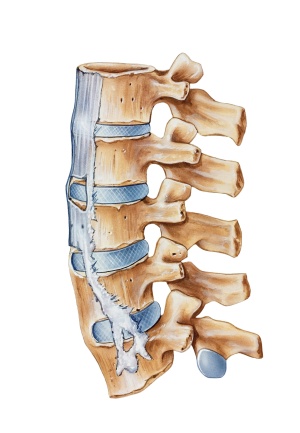
© iStockphoto.com/MedicalArtInc
Ankylosing spondylitis (AS) is a chronic inflammatory disease characterized by pain and stiffness in the spine. In extreme cases, AS could lead to abnormal bone formation and fusion of the vertebrae.
Genetics is known to play an important role in the development of AS. Jianjun Liu at the A*STAR Genome Institute of Singapore and co-workers have now conducted a genome-wide association study on the Chinese population and identified two genetic variations that could increase the risk of AS.
Previous genome-wide association studies on European populations have already shown that variations in major histocompatability complex (MHC) genes — genes that have an important role in immune function — are common in patients with AS. The finding suggests that autoimmune mechanisms play a role in AS, but account for only 20–30% of the risk of inheriting of the condition.
Liu and his team performed a two-stage genome-wide association study to identify additional genetic variations. They first analyzed the entire genomes of 1,965 individuals with AS and compared them to those of 4,301 healthy people. All of the study participants were of Chinese Han descent.
The researchers used quality control measures to filter the data, and then further analyzed more than 272,000 genetic variants within the genomes from 1,837 of the individuals with AS and 4,231 of the controls. Their analyses not only confirmed that the genetic variations previously identified in European populations are also present in the Chinese Han population, but also identified numerous other variations with the MHC regions of chromosome 6, all of which are strongly associated with susceptibility to the condition.
The researchers validated the potential variants by further analysis of the data, and identified two more variations associated with susceptibility, in other regions of the genome. Both of these newly identified variants are located near genes that are known to be involved in cartilage development and bone formation, and may therefore affect how these genes are regulated.
The findings support earlier evidence that inflammation and new bone formation occur independently during AS development, and suggest that the processes of cartilage development and bone formation as potential targets for future therapies.
“Some variants might be specific to each population,” says Liu. “However, further direct comparative studies of the samples from different ethnic populations will be needed to identify them.” Liu adds that there are approximately 20–30% of AS patients who have a family history of the disease. His next step is to find out whether the susceptibility variants he identified can help to explain the familial risk further. “We suspect that there are different variants for the familial risk,” says Liu.
The A*STAR-affiliated researchers contributing to this research are from the Genome Institute of Singapore.



